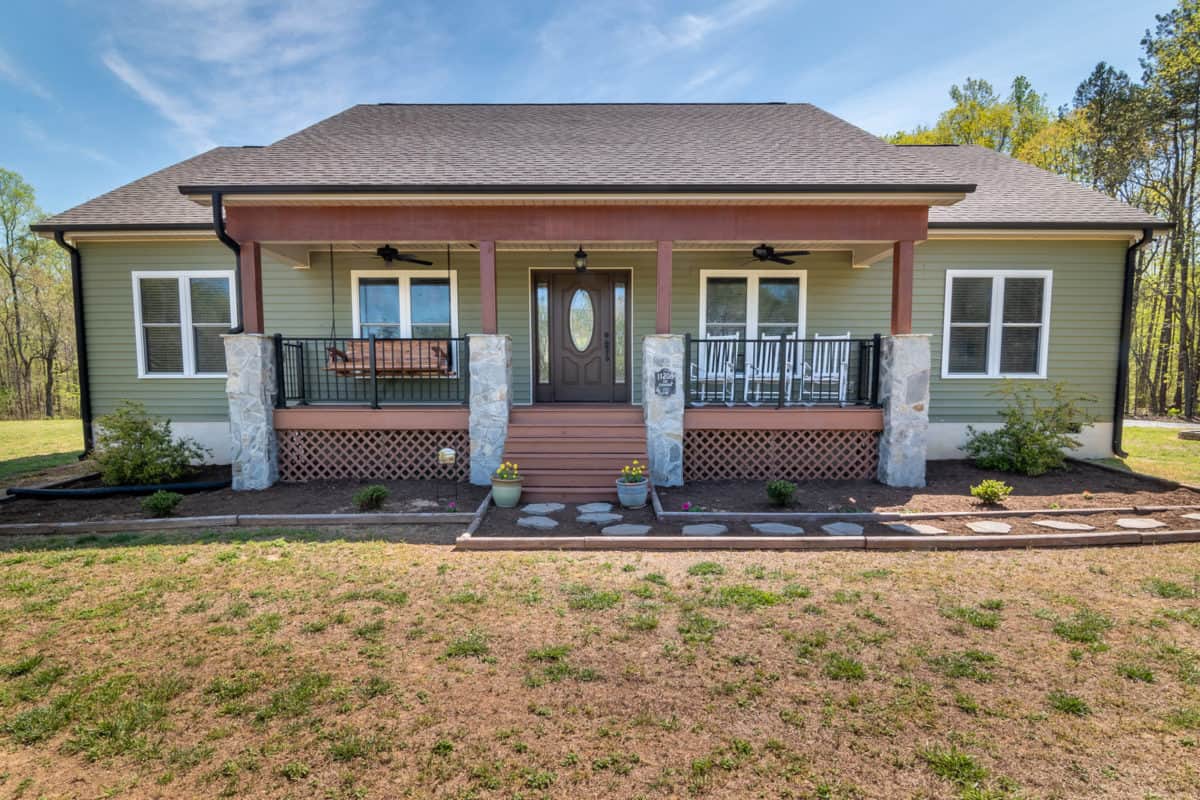So you are thinking of installing a new roof on your home or commercial property? Good news, thanks to construction advancements, you can choose from a multitude of roofing options. It may feel overwhelming when deciding what option best suits your needs and requirements. This decision can have significant consequences on maintenance, RIO, and overall building health.
To help you out, we break down several important criteria one should consider for roof installation. We will compare metal roofs and another popular roofing option- asphalt.
Let’s compare these two roof types by 6 criteria when considering installing a new roof:
Before we start comparing these two roof types, let’s look at the material and variety within each category.
Let’s start by breaking down the 4 popular types of metal roofs; steel, aluminum, zinc, and copper roofs.

Steel roofs and steel, in general, are the most common material used in the construction of both commercial and residential buildings. Steel is an alloy, which means it’s made from iron and other elements.
There are three main types of steel used in construction:

Asphalt shingles used in roofs are not 100% asphalt. Instead, they usually have a fiberglass or paper base that is protected by a layer of asphalt. Three-tab asphalt shingles and architectural roofing shingles are the most widely available asphalt roofing shingles.
Now that we’ve covered the basics, let’s dive into comparing these two popular roofing options!
As roofing technology progresses, both metal and asphalt roofing options are increasing in variety and appearance.
Metal roofs have an ever-abundant amount of options available. You can choose from a variety of metals as well as colors and designs. For example, you can now get metal tiles, shingles, panels, and ribbed. You can even have a metal roof that replicates the look of wood! It used to be that appearance-wise metal used to be deemed as too agricultural. This notion is quickly changing.
Asphalt roofs are also known for having a lot of aesthetic options. Appearance-wise, asphalt has always provided vast diversity in color and style.
The installation process for metal roofs is more technical than that of asphalt roofs. Unless you are an expert with assistance, we recommend you hire a specialized crew. Installing a metal roof needs more precision to ensure that your roof is durable and properly in place, which will allow it to last its intended lifetime. In some instances, you can install metal panels over an existing roof. This simplifies the installation process and price.
When it comes to maintenance, metal roofs are harder to replace individually. Luckily, metal roofs usually never require maintenance. To avoid maintenance, make sure you choose the most suitable metal for your environment.
Asphalt roofs are fairly simple to install, requiring less time and less expertise. When in need of repairs and maintenance, asphalt roofs are also a piece of cake. Some homeowners even take on that endeavor themselves.

When it comes to durability and lifespan, metal roofs easily supersede asphalt roofs. Metal roofs are known for being extremely durable, lightweight, and water-resistant. They can pretty much handle any unpleasant environment. That’s why they typically come with a 40 to 75-year warranty!
Metal roofs do have their kryptonite. Denting is a possibility with extreme hail or an extremely heavy branch falling. But this also depends on the metal type. So if you live in a location vulnerable to hail, you would be better off going with steel, a harder metal, instead of copper or zinc.
Asphalt has many types of ‘kryptonite,’ causing it to score very low in durability and lifespan:
Based on this list, we are not surprised asphalt roofs have a pretty short lifespan lasting 15 to 20 years or less. So if you are planning to live in your building for more than 12 years, you might be paying for multiple asphalt roof installations.
Metal also rules when it comes to sustainability and energy efficiency. Most metal roofs can be recycled numerous times without damage to quality. Steel roofs are the most sustainable of metal roofs. When recycled, steel saves around 75% of the energy that would be used in making the material. Recycling also avoids waste and emissions from material extraction from the earth.
Metal roofs also have great energy-efficient properties saving the earth and saving you money! Metal roofs’ reflective quality helps block heat and keep your building cool. You can also add a layer of paint to improve this heat-blocking property. In places where it gets cold, steel’s strength allows for thick layers of insulation to keep the building warm and your energy bill down. Overall, structures with metal roofs can an average of 30% off their energy bills!
We all know how the extraction and reliance on fossil fuels are damaging our planet. Well, we hate to break it to you, but asphalt is a petroleum-based product making you even more reliable on fossil fuels. To add to that, because of asphalt shingles’ short lifespan and the fact that they are not recyclable, nearly 20 billion pounds of old asphalt shingles end up in landfills. Therefore, more fossil fuel is required to produce them.
When it comes to energy efficiency, asphalt can save you money on your electricity bill if you live in a colder climate. Unfortunately, asphalt will increase your bill in the summer since it absorbs a lot of heat, making it an energy guzzler trying to keep your building cool.
Like we’ve mentioned before, there is a wide range of metal roofs leading to a wide range of pricing. On average, metal roofing will cost you between $6.75 to $14 per square foot, including installation.
Asphalt shingles will end up costing you around $1.50 to $5.50 per square foot.
Metal roofs are on the pricier side of roofing options than asphalt roofs, but you tend to recoup a lot of the cost down the road. Metal roofs last longer and rarely need replacing. Insurance companies also provide metal roof owners with discounts on property insurance. Not to mention all the energy bill savings that come with owning a metal roof.

When it comes to return-on-investment, metal roofs hands down supersede asphalt roofs. Across the country, homeowners who invest in metal roofing can get an average ROI of 85.9%.
Metal roofs can also lower your insurance rates because of their durability and fire resistance properties in states that are prone to wildfires.
Asphalt shingle roofs may have to be replaced two or three times during the years you occupy the building. These roofs deteriorate relatively quickly and provide no real return on investment (ROI).
Installing a new roof is a venture most property owners and homeowners will encounter. Here at MBMI, we strive for quality and we strive to provide our customers with quality knowledge regarding what their best options are for construction projects.